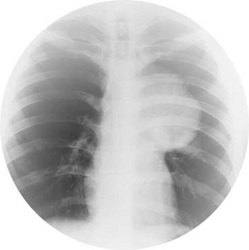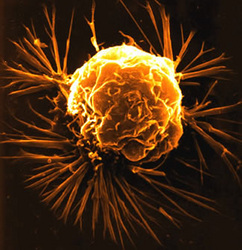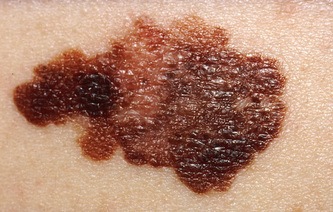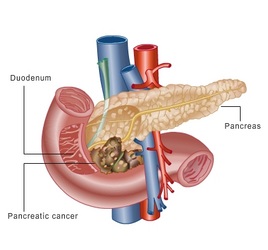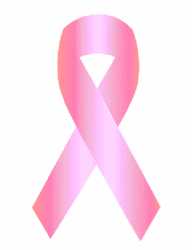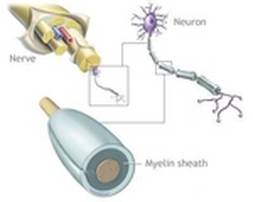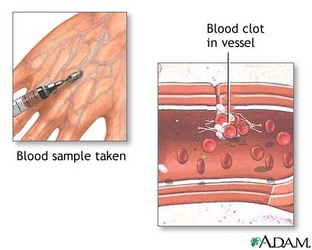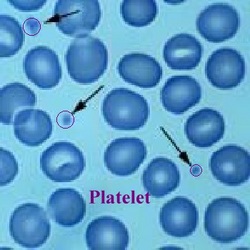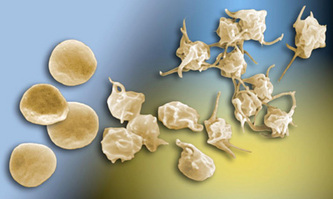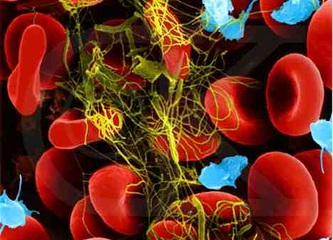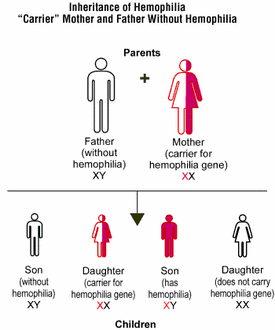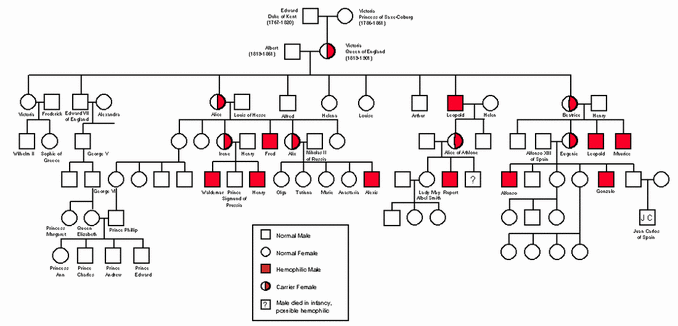RECOVERY
Wounds and Diseases
Cancer
Definition: The uncontrolled growth of irregular cells in the body. Another name for these cells is malignant cells.
The main quirk that makes cancer especially dangerous is that the irregular cells themselves grow from normal cells. Non-Cancerous cells multiply when the body has a need, and they die when the body doesn't need them. Cancerous cells, on the other hand, continue to grow and multiply at an unsustainable pace, completely ignoring the body's needs. This usually leads to tumors, which are groupings of these cancerous cells. Once the tumor forms, the cancerous cells are able to spread throughout the body and completely destroy most of the normal living cells, leading to death, or at least substantial mutation.
The main causes of cancer include the following:
The main quirk that makes cancer especially dangerous is that the irregular cells themselves grow from normal cells. Non-Cancerous cells multiply when the body has a need, and they die when the body doesn't need them. Cancerous cells, on the other hand, continue to grow and multiply at an unsustainable pace, completely ignoring the body's needs. This usually leads to tumors, which are groupings of these cancerous cells. Once the tumor forms, the cancerous cells are able to spread throughout the body and completely destroy most of the normal living cells, leading to death, or at least substantial mutation.
The main causes of cancer include the following:
Smoking
While it is commonly known that smoking is one of the major leading causes in death among Americans, few understand the extent of ways in which it actually kills people. In terms of causing cancer, the main culprit is the chemicals within the smoke. Among 250 harmful chemicals in smoke within tobacco, 69 are known to cause cancer. These chemicals include Arsenic, Ethylene Oxide, and Benzene. These, and many other chemicals, cause the slowing of the production of a vital protein known as FANCD2, which is produced in lung cells. This causes the DNA strands to not duplicate correctly, forming mutated lung cells. FANCD2 is also known to help kill cancerous cells.
Genetic mutations
As stated above, genetic mutations are at the root of as to why cancerous cells actually form. To understand this at a basic level, one must go all the way down to the Adenine (A), Thymine (T), Cytosine (C), and Guanine (G) that are the ingredients that form part of Deoxyribonucleic Acid (DNA). In a normal strand of DNA, A pairs with T and C pairs with G. These pairs roll down in rungs, forming a strand. The strand is then read by Ribonucleic Acid (RNA) as to what proteins and cells should be formed in the body. When even one of these pairs is corrupted (ie A with G), it causes the wrong proteins to be produced and the wrong cells are produced as well. Cells that are mutated and reproduce at abnormally fast rates become cancer cells.
Treatments for Cancer
While there is no complete cure for all types of cancer, there are three treatments that are reliable enough to be practiced in most medical facilities and have a modest success rate. The first, being the most successful, is surgery. Surgery can only be performed in the early stages of the cancer, before it spreads throughout the body. Once the tumor is removed, the person is usually completely cured, considering that the cancer didn't spread to other parts of the body. While this may seem pretty simple, many parts of the body, such as the pancreas, can't have any cancerous cells removed through surgery. Also, the cancer must be caught at the early stages, and while for some cancers, such as Prostate Cancer, in which that period is long, other cancers must be caught extremely early for surgery to be a viable option. If surgery is unavailable, the next possible form of recovery is to use radiation therapy. This involves a high-powered beam, usually that of an x-ray, to be aimed toward the growth of malignant cancer cells and destroying them. While it destroys the malignant cells, it also destroys normal cells as well, leading to extremely varied results. Radiation therapy is usually not performed unless surgery is not an option. The third main cure is chemotherapy (or treatment with drugs). The drugs go through the body, killing the cancerous cells. Its method for differentiating cancerous cells from normal cells is different from radiation and surgery in that it looks for the fast dividing characteristics of cancer cells and kills them. This has the negative side effect of often killing fast dividing normal cells, such as blood cells and many cells lining the stomach, intestines, and mouth. Most notably, however, the drugs can kill the fast dividing cells in the hair follicles, causing rapid and random hair loss all over the head. Another negative side effect of chemotherapy is that it suppresses the immune system, which can lead to infections from diseases that line the then weakened intestinal tracts. Overall, chemotherapy is the last resort to treating cancer should surgery and radiation therapy prove ineffective.
Guillain-Barre Syndrome (GBS)
What is it?
Guillain-Barre (GBS) is an extremely rare medical condition that affects nerve cells outside the brain and spinal cord. Guillain-Barre is an autoimmune disorder. The immune system, which usually protects us by attacking invaders, mistakes the body’ cells for harmful invaders and begins to destroy them. The nerves outside the brain and spinal cord are called the peripheral nerves. They transmit signals from our brain to our muscles telling them to move. They also transmit sensory signals (touch, pressure, temperature, and pain) from our body to our brain. When Guillain-Barre causes these nerves to be damaged, the signals are interrupted. As a result, someone with GBS may have weakness or problems moving.
Causes:
There is no known cause for Guillain-Barre. GBS can affect people of any age and of any sex, but most cases are older people. Scientists do have some theories about the syndrome and why it surfaces in the body. For example, doctors report that more than half of all GBS cases seem to occur after a viral or bacterial infection like a sore throat or diarrhea. Occasionally, minor surgery or a flu shot might trigger the GBS symptoms. Guillain-Barre only affects about one in every 100,000 people.
Symptoms:
The severe symptoms of Guillain-Barre take place two weeks after the first signs appear. The first few symptoms include weakness and tingling in the legs and/or arms and these appear within one day. The victim will become increasingly tired. The victim’s reflexes begin to fade away. If the case is severe, the victim’s muscles become completely paralyzed. Victims suffering from these severe cases have to go to the hospital and are sometimes put on a respirator if they cannot breathe on their own.
Treatment:
Plasmapheresis - The doctor extracts blood from the patient and the blood is processed. The blood is separated into red cells, white cells, and the plasma. The red and white blood cells are returned to the body without the plasma. Scientists think that this process helps remove some of the harmful antibodies and seems to reduce the severity and length of Guillain-Barre symptoms.
Immunoglobulin therapy - Healthy antibodies from blood donors are used to help block the harmful antibodies in the body of the person with Guillain-Barre.
Recovery:
Depending on how serious the case is, the victim can be in the hospital for several weeks, or even several months. Even after returning home from the hospital, it may take a while before a person fully recovers. Some people with GBS might need to be in a wheelchair or use a walker until they regain their strength. Many will need physical therapy to get their bodies moving properly again. Even if someone if moving their limbs for them, the muscles become stronger so they can be used once the person recovers. Recovering from GBS takes a long time. Some people may feel some weakness as long as 2 or 3 years after having the condition. Only about 90% of GBS victims fully recover. GBS can be painful both physically and mentally. GBS strikes so suddenly and without warning, so it can be difficult to deal with and adjust to the recovery period. Waking up and not being able to move or speak is a living nightmare. Most doctors recommend that victims see a counselor, therapist, or join a support group to talk through the many confusing feelings that can go with having the syndrome. GBS can really impact a person's lifestyle, and it may take a while before people are able to participate fully in their favorite sports or activities. For this reason, GBS is particularly hard for kids and teens who are usually very active. For people who have gone through a slow recovery, it's natural to worry that the GBS might come back. Only about 1% of the .00001% victims of GBS get it again. Many people become frightened that they are getting GBS again as soon as they feel and tingling in their hands or feet. In most cases, though, these symptoms are not a sign that the GBS is recurring. These feelings are more likely associated with some lingering nerve trouble after the initial bout of GBS because damaged nerves only grow back at a rate of 1 inch per month, and they are often left weaker than original.
Guillain-Barre (GBS) is an extremely rare medical condition that affects nerve cells outside the brain and spinal cord. Guillain-Barre is an autoimmune disorder. The immune system, which usually protects us by attacking invaders, mistakes the body’ cells for harmful invaders and begins to destroy them. The nerves outside the brain and spinal cord are called the peripheral nerves. They transmit signals from our brain to our muscles telling them to move. They also transmit sensory signals (touch, pressure, temperature, and pain) from our body to our brain. When Guillain-Barre causes these nerves to be damaged, the signals are interrupted. As a result, someone with GBS may have weakness or problems moving.
Causes:
There is no known cause for Guillain-Barre. GBS can affect people of any age and of any sex, but most cases are older people. Scientists do have some theories about the syndrome and why it surfaces in the body. For example, doctors report that more than half of all GBS cases seem to occur after a viral or bacterial infection like a sore throat or diarrhea. Occasionally, minor surgery or a flu shot might trigger the GBS symptoms. Guillain-Barre only affects about one in every 100,000 people.
Symptoms:
The severe symptoms of Guillain-Barre take place two weeks after the first signs appear. The first few symptoms include weakness and tingling in the legs and/or arms and these appear within one day. The victim will become increasingly tired. The victim’s reflexes begin to fade away. If the case is severe, the victim’s muscles become completely paralyzed. Victims suffering from these severe cases have to go to the hospital and are sometimes put on a respirator if they cannot breathe on their own.
Treatment:
Plasmapheresis - The doctor extracts blood from the patient and the blood is processed. The blood is separated into red cells, white cells, and the plasma. The red and white blood cells are returned to the body without the plasma. Scientists think that this process helps remove some of the harmful antibodies and seems to reduce the severity and length of Guillain-Barre symptoms.
Immunoglobulin therapy - Healthy antibodies from blood donors are used to help block the harmful antibodies in the body of the person with Guillain-Barre.
Recovery:
Depending on how serious the case is, the victim can be in the hospital for several weeks, or even several months. Even after returning home from the hospital, it may take a while before a person fully recovers. Some people with GBS might need to be in a wheelchair or use a walker until they regain their strength. Many will need physical therapy to get their bodies moving properly again. Even if someone if moving their limbs for them, the muscles become stronger so they can be used once the person recovers. Recovering from GBS takes a long time. Some people may feel some weakness as long as 2 or 3 years after having the condition. Only about 90% of GBS victims fully recover. GBS can be painful both physically and mentally. GBS strikes so suddenly and without warning, so it can be difficult to deal with and adjust to the recovery period. Waking up and not being able to move or speak is a living nightmare. Most doctors recommend that victims see a counselor, therapist, or join a support group to talk through the many confusing feelings that can go with having the syndrome. GBS can really impact a person's lifestyle, and it may take a while before people are able to participate fully in their favorite sports or activities. For this reason, GBS is particularly hard for kids and teens who are usually very active. For people who have gone through a slow recovery, it's natural to worry that the GBS might come back. Only about 1% of the .00001% victims of GBS get it again. Many people become frightened that they are getting GBS again as soon as they feel and tingling in their hands or feet. In most cases, though, these symptoms are not a sign that the GBS is recurring. These feelings are more likely associated with some lingering nerve trouble after the initial bout of GBS because damaged nerves only grow back at a rate of 1 inch per month, and they are often left weaker than original.
Blood Clotting:
What is Blood Clotting?
Also known as coagulation or hemostasis, blood clotting is when cuts or openings in the epidermal layer (skin) are clogged up in order to prevent blood loss. Regardless of the severity of the cut, the clotting itself happens almost instantaneously. The clotting process is divided into several steps. In almost all arteries of the body, blood is being pumped away from the heart. Because of this pumping action, a cut without any way to block that cut would result in the artery pumping blood right out of the artery, into the epidermal tissue, causing different ranges of bleeding. The bloodstream consists of red blood cells that carry oxygen, 9u.
Blood contains proteins, known as clotting factors, which allow blood clots. Clotting factors are special in that they are able to call more clotting factor in when they are released. That allows for the clot to form at the cut. This results in a chemical chain reaction in which fibrin (protein for blood clots) is produced. A fibrin-formed blood clot is much more durable and tougher than platelets.
Once fully grown, the clot itself must be prevented from spreading throughout the body, where it could block blood flow, and cause damage. Many anti-clotting proteins, such as antithrombin and protein C, exist in proportion with clotting factors. The anti-clotting enzymes neutralize excess clotting factors, preventing them from extending the blood clot farther than it should go.
As the tissue recovers, the body begins to dissolve the blood clot and reabsorb it back into the bloodstream. Enzymes are responsible for dissolving the fibrin that is located at the clot. Lastly, other small, various substances are responsible for breaking the enzymes down.
Blood contains proteins, known as clotting factors, which allow blood clots. Clotting factors are special in that they are able to call more clotting factor in when they are released. That allows for the clot to form at the cut. This results in a chemical chain reaction in which fibrin (protein for blood clots) is produced. A fibrin-formed blood clot is much more durable and tougher than platelets.
Once fully grown, the clot itself must be prevented from spreading throughout the body, where it could block blood flow, and cause damage. Many anti-clotting proteins, such as antithrombin and protein C, exist in proportion with clotting factors. The anti-clotting enzymes neutralize excess clotting factors, preventing them from extending the blood clot farther than it should go.
As the tissue recovers, the body begins to dissolve the blood clot and reabsorb it back into the bloodstream. Enzymes are responsible for dissolving the fibrin that is located at the clot. Lastly, other small, various substances are responsible for breaking the enzymes down.
Hemophilia
What is Hemophilia and what are its Symptoms?
Hemophilia is a rare genetic disease in which the blood doesn't clot properly, or doesn't clot at all. If you are a hemophilic, you will bleed for a longer time than others after a cut. You also may suffer from increased internal bleeding in body parts such as the knees, ankles, and elbows. Internal bleeding is especially dangerous due to the fact that the blood can damage vital organs and tissues necessary for life.
What causes Hemophilia?
Hemophilia is not caused through day-to day interactions with other peers in one's environment. Rather, hemophilia is passed down from generation to generation through the sex chromosomes. The sex chromosomes (commonly known as the XY or XX chromosomes) are the genetic information that carry the instructions of whether a fetus, when its cells are differentiating, should make male body parts or female body parts. However, gender determination is not the only thing that is carried on these chromosomes. Many mutations, such as color blindness and hemophilia, are carried on these chromosomes as well and are passed on when the parents each give one of their chromosomes to their child. In fact, at its roots, hemophilia is not a disease. It is more of a genetic mutation that has nothing to do with infection or recovery. While a person can take medicine to hold off and ease the symptoms of hemophilia, the mutation can't be cured, and is permanent. Another common misconception is that females can't get sex linked mutations, such as color blindness, from their parents.
How is Hemophilia transferred from Generation to Generation?
Healing of Bones
- When a bone breaks, the fissure also severs the blood vessels running down the length of the bone. Blood leaks out of these veins and forms a clot called a fracture hematoma. This keeps both pieces lined up for mending.
- The fracture hematoma develops tougher tissue forming into a soft callus. Cells called fibroblasts begin producing fibers of collagen, the major protein in bone and connective tissue. Chondroblasts then begin to produce a type of cartilage called fibrocartilage. This transforms the callus into a tougher fibrocartilaginous callus, which bridges the gap between the two pieces of bone. This callus generally lasts for about three weeks.
- Next, osteoblasts move in and produce bone cells, transforming the callus into a bone callus. This hard shell lasts three to four months, and it provides necessary protection and stability for the bone to enter the final stage of healing.
- The body establishes the position of the bone within the flesh and creates a hard callus to bridge the gap between the two pieces of bone. The bone's blood circulation improves and the bone-strengthening nutrients, such as calcium and phosphorus, strengthen the bone.
Why do the bones of older people heal slower than the bones of younger people?
Sources:
http://www.webmd.com/a-to-z-guides/blood-clots
http://www.ncbi.nlm.nih.gov/pubmedhealth/PMH0001704/
http://health.howstuffworks.com/human-body/systems/circulatory/adam-200077.htm
http://www.cancer.gov/cancertopics/factsheet/Tobacco/cessation
http://www.medicinenet.com/guillain-barre_syndrome/article.htm
http://www.webmd.com/a-to-z-guides/blood-clots
http://www.ncbi.nlm.nih.gov/pubmedhealth/PMH0001704/
http://health.howstuffworks.com/human-body/systems/circulatory/adam-200077.htm
http://www.cancer.gov/cancertopics/factsheet/Tobacco/cessation
http://www.medicinenet.com/guillain-barre_syndrome/article.htm
